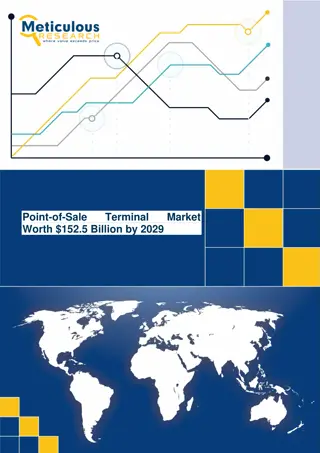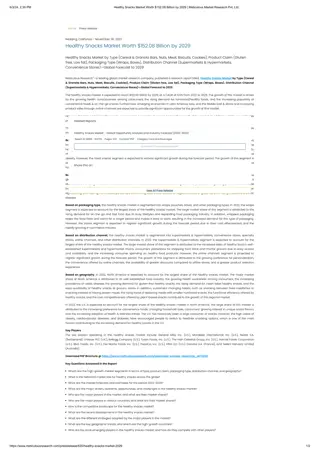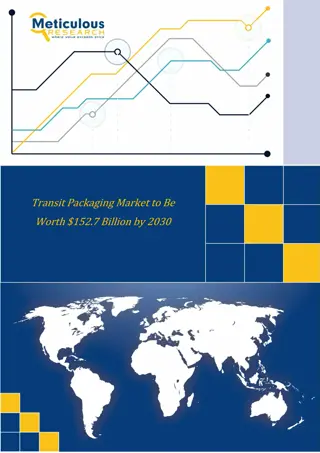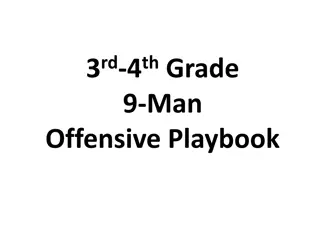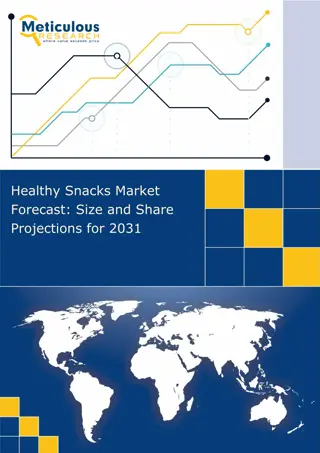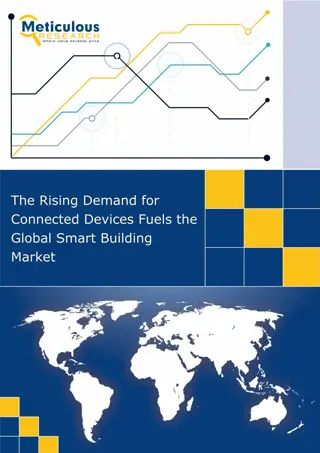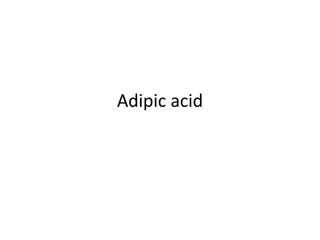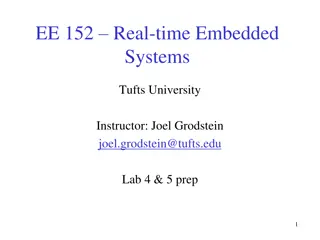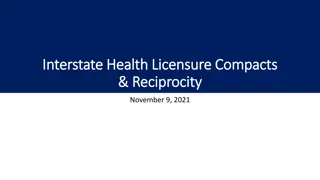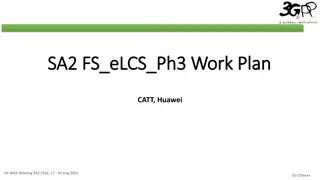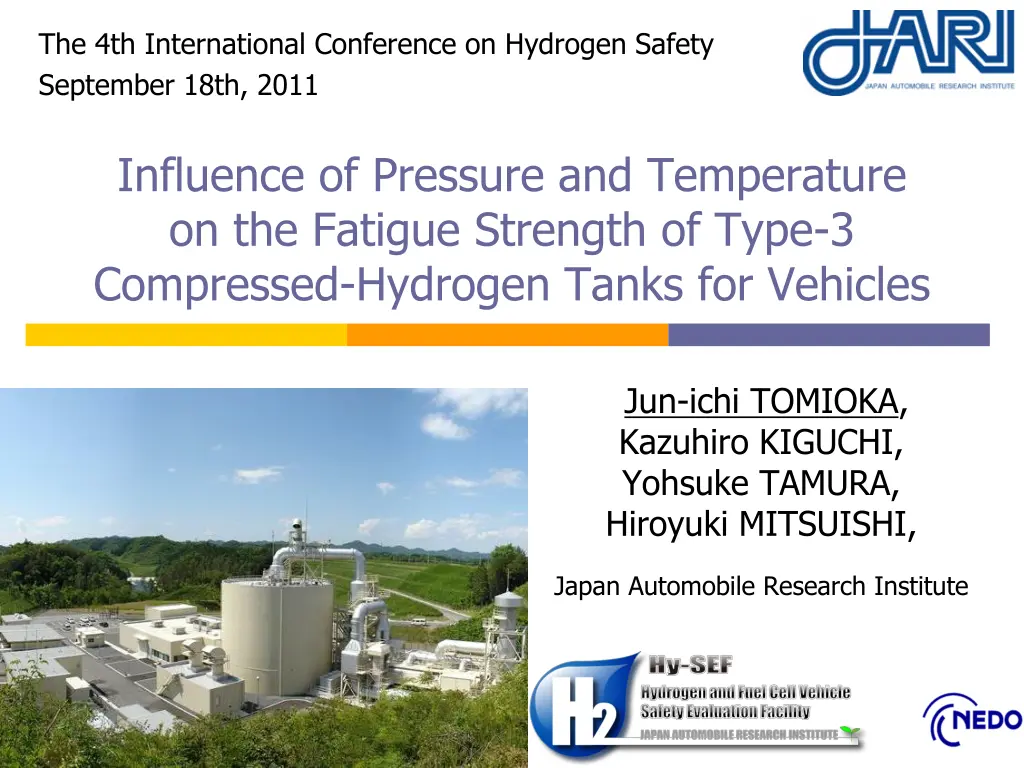
Influence of Pressure and Temperature on Fatigue Strength of Type-3 Compressed Hydrogen Tanks
Explore the impact of pressure and temperature on fatigue strength of type-3 compressed hydrogen tanks for vehicles at the 4th International Conference on Hydrogen Safety. The study investigates the effects of varying environmental temperatures and pressures on the tanks' fatigue life, shedding light on crucial factors influencing their performance.
Download Presentation

Please find below an Image/Link to download the presentation.
The content on the website is provided AS IS for your information and personal use only. It may not be sold, licensed, or shared on other websites without obtaining consent from the author. If you encounter any issues during the download, it is possible that the publisher has removed the file from their server.
You are allowed to download the files provided on this website for personal or commercial use, subject to the condition that they are used lawfully. All files are the property of their respective owners.
The content on the website is provided AS IS for your information and personal use only. It may not be sold, licensed, or shared on other websites without obtaining consent from the author.
E N D
Presentation Transcript
The 4th International Conference on Hydrogen Safety September 18th, 2011 Influence of Pressure and Temperature on the Fatigue Strength of Type-3 Compressed-Hydrogen Tanks for Vehicles Jun-ichi TOMIOKA, Kazuhiro KIGUCHI, Yohsuke TAMURA, Hiroyuki MITSUISHI, Japan Automobile Research Institute
Background 1 Hydrogen Tank Aluminum Alloy Liner 35MPa Type-3 Fuel Cell or Hydrogen Engine Carbon Fiber Reinforced Plastic (CFRP) 35 MPa Compressed Hydrogen Tanks Type-3 : Fully wrapped composite tanks with metal liners Type-4 : Fully wrapped composite tanks with plastic liners www.peugeot.com 3
Background 2 Fatigue Strength Fatigue strength against pressure cycling. Pressure Leak... Time Hydraulic pressure cycle test examination of fatigue life fluid temperature changes slightly 300 cycles per one hour Gas cycle test examination of fatigue life and hydrogen embrittlement gas temperature changes greatly 1 cycle per one hour It is not clear what effect the diferences in the test methods have on the fatigue process. 4
Background 3 Load on Tank Internal pressure (gas) Pressure changes with temperature, even if the same mass is filled. SOC (State of charge) : hydrogen-filled state based on hydrogen-mass in the tank. SOC:100% SOC:0% 50 Pressure [MPa] 40 44 30 35 20 28 10 0 -50 0 50 100 Temperature [ C] Thermal stress Because of differences in thermal expansion rates, thermal stress is generated by temperature changes. Aluminum Alloy Liner thermal expansion: large 35MPa Type-3 Fatigue life under the SOC100% condition is not clear CFRP thermal expansion: small 5
Purpose To clarify the influence of environmental temperature and pressure assuming SOC100% on the fatigue life of compressed hydrogen tanks for vehicles. Hydraulic pressure cycle tests with varying environmental temperatures and pressures LT(low temp.) RT(room temp.) HT(high temp.) AT(ambient temp.) : -40 C, 28MPa : 15 C, 35MPa : 85 C, 44MPa : 15 C ~25 C, 44MPa 6
Specification of Test Tank Specification of Test Tank Filling Volume [L] External Diameter - Length [mm] Specification Liner Material Pressure [MPa] Aluminum Alloy 280 730 Type-3 35 28 Carbon Fiber Reinforced Plastic (CFRP) Layer Liner Dome Section Tail End Plug Cylindrical Section Schematic Diagram of Compressed Hydrogen Tank 8
Test Equipment Hydraulic Tester hydraulic Tester High pressure pipe Thermostatic Chamber Intensifier Pump Power Unit Thermostatic Chamber 120 MPa Intensifier Constant-temperature (-40 ~ 150 deg.C) 9
Test Conditions Test conditions of pressure cycle test LT RT HT AT* 50 SOC 100% 125% Pressure [MPa] 40 -40 C +15 C +85 C +15~25 C Temperature 30 Maximum Pressure Minimum Pressure Fluid (Medium) Frequency 20 28MPa 35MPa 44MPa 44MPa 10 0 0 MPa -40 28MPa 15 35MPa 85 44MPa Perfluoro- polyether Deionized Water Pressure profile of cycle test 15 sec/cycle Waveform Sine Curve Termination Occurrence of Leak Before Break (LBB) * Ambient-Temperature Pressure-Cycle Test specified in JARI S001 10
3. RESULTS OF CYCLING TESTS 11
Fatigue Life of Type-3 Tank 1,000,000 the mean S.E., N=2 SOC100% Fatigue Life [cycles] 147,797 135,626 SOC125% 100,000 Leak Leak 27,645 22,782 Leak Leak 10,000 LT:-40 28 MPa SOC100% RT:15 35 MPa SOC100% HT:85 44 MPa SOC100% AT:15~25 44 MPa SOC125% Fatigue life determined by hydraulic pressure-cycle tests Leakage occurred in all tanks Lives under SOC 100% were longer than the life under AT(SOC125%). Pressure-cycle test under AT(SOC125%) can ensure the safety of a Type-3 tank against fatigue. 12
Liner Stress of Type-3 tank Stress due to internal pressure (tensile stress) Residual stress Autofrettage processing produces residual stress (CFRP: tensile stress, Liner: compressive stress) Thermal stress Because of differences in thermal expansion rates in aluminum alloy and CFRP To determine the liner stress, we measured the strain on the inner surface of the liner. 14
Stress due to Internal Pressure Strain gauge on the liner Hydraulic pressure Hydraulic system Measuring method for strain due to internal pressure Strain gauges were attached to the inner surface of the liner Applying pressure to the tank Measuring the strain due to internal pressure Caluculate the stress based on the measured strain. The inner surface of the liner 15
Stress due to Internal Pressure 450 400 Liner stress [MPa] 350 300 250 200 circumferential stress axial stress 150 100 50 0 0 10 20 30 40 50 Pressure [MPa] Relationship between pressure and stress of the liner Relationship between pressure and stress of the liner was linear-proportion. 16
Residual Stress Cut 1 Cut 3 : Separate CFRP and Liner Cut 2 CFRP a a b B b Liner Strain gauges Strain gauges A, B : Outer surface of CFRP a, b : Inner surface of liner Measuring method for residual strain In all tanks after the pressure-cycle test, strain gauges attached to the outer surface of the CFRP and the inner surface of the liner Cutting the tank at room temperature (15 C) to release the residual strain Measuring the residual strain Caluculate the stress based on the measured strain. 17
Residual Stress (Measured results) Residual strain of the tank after the pressure-cycle test at RT Axial strain 0.097% -0.134% Circumferential strain 0.034% -0.265% Tensile strain resided in the CFRP and compressive stress resided in the liner. CFRP Liner Residual stress of Liner Liner Usage circumferential stress -256MPa -239MPa -126MPa environment LT : -40 C RT : 15 C HT : 85 C Residual stress of the liner after pressure-cycle test at HT was smaller than the others. 18
Thermal Stress Thermostatic Chamber -40 C 85 C Thermocouple Thermocouple 1 2 Strain gauge Aluminum tube Strain gauge ts: Strain due to the thermal stress 1 : Strain of the liner 2 : Strain of the aluminum tube Measuring method for thermal strain ts = 1 - 2 Strain gauges and thermocouples were attached to the inner surface of the liner and the aluminum tube Changes in the temperature ranging from -40 C to +85 C ( 15 C -40 C 15 C 85 C 15 C Measuring the thermal strain Caluculate the stress based on the measured strain. 19
Thermal Stress 0 Liner Stress [MPa] -100 -200 plastic deformation (yield stress: 300MPa) -300 -400 -50 0 Temperature [ C] 50 100 Relationship between temperature and circumferential stress of the liner In high-temperature and low-pressure, the liner was loaded with residual compressive stress and compressive stress due to the thermal stress. The liner was deforemd plastically in high-temperature and low-pressure. 20
Liner Stress (hydraulic cycle) AT ( 15~25 C, 44MPa ) 200 SOC0% 100 Liner Stress [MPa] LT 0 SOC100% -40 C, 28MPa RT HT 85 C, 44MPa 15 C, 35MPa -100 SOC125% at 20 C -200 plastic deformation (yield stress: 300MPa) -300 -400 -50 0 50 100 Temperature [ C] Relationship between temperature and circumferential stress of the liner Tensile stress at AT (SOC125%) exceeds that under any SOC100% condition. The pressure-cycle test under AT can ensure the safety of a Type-3 tank against fatigue life. 21
Liner Stress (gas cycle) 200 100 Liner Stress [MPa] SOC0% 0 gas cycle at -40 C SOC100% -100 gas cycle at 15 C -200 inferred SOC100% in gas cycle -300 -400 -50 0 50 100 Temperature [ C] Relationship between temperature and circumferential stress of the liner the gas cycle is the repetition of a low-temperature and low-pressure condition and a high-temperature and high-pressure condition. The liner will be not deforemd plastically in gas cycle. 22
Liner Stress (hydraulic and gas) 200 100 Liner Stress [MPa] SOC0% 0 LT gas cycle at -40 C -40 C SOC100% RT 15 C HT 85 C gas cycle at 15 C -100 -200 inferred SOC100% in gas cycle -300 -400 -50 0 50 100 Temperature [ C] Relationship between temperature and circumferential stress of the liner The stress range during gas cycles is smaller than during hydraulic cycles. Hydraulic cycles are more severe than gas cycles. 23
5. SUMMARY 24
Summary Pressure cycle tests assuming SOC 100% in type-3 tanks revealed that The fatigue life assuming SOC 100% is longer than the room temp. pressure cycle test (AT,SOC125%). The room temp. pressure cycle test (AT,SOC125%) can ensure the safety of a Type-3 tank against fatigue. Stress range during gas cycles is smaller than during hydraulic cycles, so the hydraulic-cycle tests are more severe than gas-cycle tests. 25
This study is summarizes part of the results of "Establishment of Codes & Standards for Hydrogen Economy Society - Research and Development Concerning Standardization of Hydrogen and Fuel Cell Vehicles" consigned by the New Energy and Industrial Technology Development Organization (NEDO). 26

